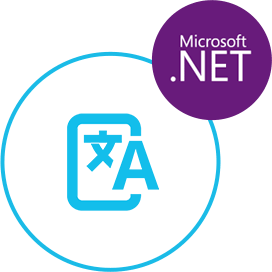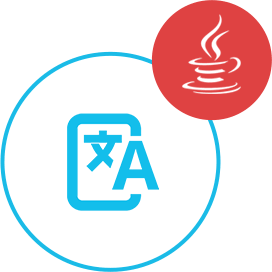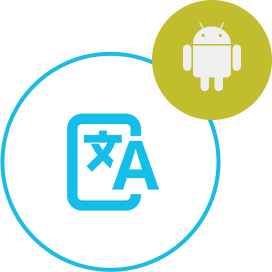Turkish to Arabic Translation with GroupDocs.Translation Cloud API in Python: A Comprehensive Guide
GroupDocs.Translation Cloud API is a powerful tool that enables users to translate documents and text between various languages. With support for Turkish to Arabic translation, users can easily integrate this functionality into their Python applications to automatically translate content across different languages. The API provides a simple and efficient way to handle translation tasks, allowing developers to focus on building innovative applications without the need to worry about the intricacies of language translation algorithms. By leveraging GroupDocs.Translation Cloud API, users can seamlessly incorporate Turkish to Arabic translation capabilities into their Python projects, enabling them to reach a wider audience and facilitate cross-lingual communication.
// Get your App SID, App Key and Storage Name at https://dashboard.groupdocs.cloud (free registration is required).
public TextResponse TranslateText(Configuration conf)
{
string pair = "tr-ar";
string text = "Turkish to Arabic Translation with GroupDocs.Translation Cloud API in Python: A Comprehensive Guide";
TranslationApi api = new TranslationApi(conf);
TranslateTextRequest request = api.CreateTextRequest(pair, text);
TextResponse response = api.RunTranslationTextTask(request);
return response;
}# Get your App SID, App Key and Storage Name at https://dashboard.groupdocs.cloud (free registration is required).
curl -X POST "https://api.groupdocs.cloud/v1.0/translation/text" \
-H "Authorization: Bearer TOKEN" \
-H "Content-Type: application/json" \
-d '[{"pair":"tr-ar", "text":"Turkish to Arabic Translation with GroupDocs.Translation Cloud API in Python: A Comprehensive Guide"}]'
# and response
{ "status":"ok", "message":"Text translated successfully", "translation":"....." }// Get your App SID, App Key and Storage Name at https://dashboard.groupdocs.cloud (free registration is required).
import com.GroupDocs.translate.api.*;
import com.GroupDocs.translate.Configuration;
private static void setUpConfig() throws Exception {
Configuration.setAPP_SID("XXXXXXXX-XXXX-XXXX-XXXX-XXXXXXXXXXXX");
Configuration.setAPI_KEY("XXXXXXXXXXXXXXXXXXXXXXXXXXXXXXXX");
}
static String TranslateText() {
pair = "tr-ar";
text = "Turkish to Arabic Translation with GroupDocs.Translation Cloud API in Python: A Comprehensive Guide";
TextInfo textInfo = new TextInfo(pair, text);
TranslationTextRequest translationTextRequest = new TranslationTextRequest(TextInfo.toString());
TranslationTextResponse translateTextResponse = TranslationApi.TranslateText(translationTextRequest);
return translateTextResponse.translation;
}# Get your App SID, App Key and Storage Name at https://dashboard.groupdocs.cloud (free registration is required).
from groupdocstranslationcloud.configuration import Configuration
from groupdocstranslationcloud.api.translation_api import TranslationApi
from groupdocstranslationcloud.models.translate_text import TranslateText
from groupdocstranslationcloud.models.translate_document import TranslateDocument
# enter valid apiKey and appSid
configuration = Configuration(apiKey="", appSid="")
api = TranslationApi(configuration)
pair = "tr-ar"
text = "Turkish to Arabic Translation with GroupDocs.Translation Cloud API in Python: A Comprehensive Guide"
translator = TranslateText(pair, text)
response = translator.to_string()
res_text = api.post_translate_text(response)
print(res_text.translation)
Features
Authentication
GroupDocs.Translation Cloud provides authentication mechanisms to ensure secure access to the API. You can use API keys or OAuth 2.0 for authentication.
Translation
The API supports translation from Turkish to Arabic as well as many other language pairs. You can translate text, documents, and websites using the API.
Quality Assurance
GroupDocs.Translation Cloud uses advanced algorithms and machine learning models to ensure accurate and high-quality translations. It also supports proofreading and editing of translated content.
File Format Support
The API supports a wide range of file formats including Word, PDF, Excel, PowerPoint, HTML, and more. It can handle various types of documents for translation.
Customization
You can customize the translation settings and options based on your specific requirements. This includes choosing the translation model, language variants, and more.
Integrations
GroupDocs.Translation Cloud can be easily integrated with Python applications. It also offers SDKs and sample code for seamless integration with other platforms and programming languages.
Frequently Asked Questions
How can I use GroupDocs.Translation Cloud for Turkish to Arabic translation on Python?
You can use the GroupDocs.Translation Cloud API to translate text from Turkish to Arabic by making HTTP requests with the required parameters, or by using the official Python SDK provided by GroupDocs. The SDK provides a set of methods to easily integrate translation functionality into your Python application.
What authentication method is required to access GroupDocs.Translation Cloud for Turkish to Arabic translation on Python?
To access GroupDocs.Translation Cloud API for Turkish to Arabic translation on Python, you need to obtain an API key from GroupDocs and include it in the request headers as an authentication token. This ensures secure and authorized access to the translation services.
Can I translate large volumes of text from Turkish to Arabic using GroupDocs.Translation Cloud on Python?
Yes, GroupDocs.Translation Cloud API for Turkish to Arabic translation on Python supports the translation of large volumes of text. You can make batch requests to translate multiple paragraphs or documents by sending the text data in the request payload or by providing the document URLs for translation.
Does GroupDocs.Translation Cloud support customization of translation models for Turkish to Arabic translation on Python?
Yes, GroupDocs.Translation Cloud supports customization of translation models for Turkish to Arabic translation on Python. You can fine-tune the translation output by providing custom glossaries, terminology, and language-specific preferences to achieve more accurate and specialized translations.



